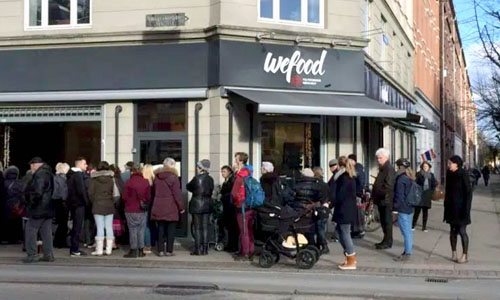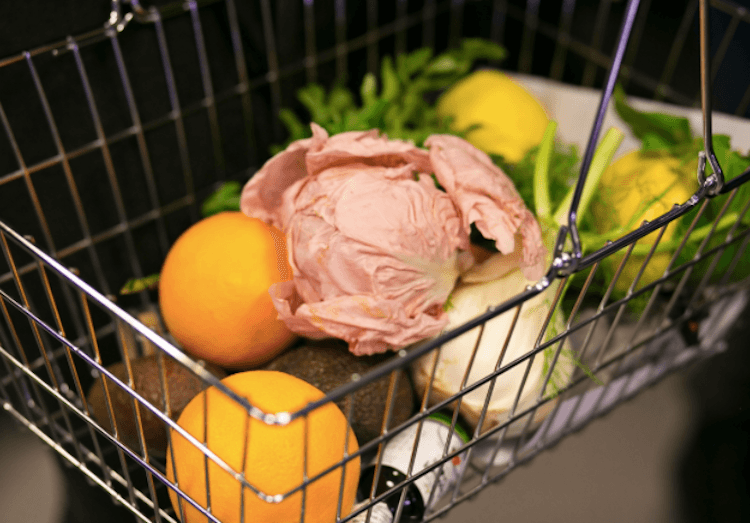

Quartz reported that it “took a fair amount of legislative wrangling” to set up the store.

Food waste is not only absurd in a world where there are 793 million people who are undernourished globally, according to the FAO, it’s also a major environmental problem. As EcoWatch Insights writer Dr. David Suzuki pointed out:
Every year a staggering one-third—1.3 billion tons—of the world’s food is wasted after it has been harvested: 45 percent of fruit and vegetables, 35 percent of fish and seafood, 30 percent of cereals, 20 percent of dairy products and 20 percent of meat. Food waste ends up in landfills, increasing methane emissions and contributing significantly to climate change. A recent study found Americans waste close to $200 billion on uneaten food while Canadians throw away $31 billion.
These figures only account for 29 percent of the full cost of waste. They don’t include factors such as labor, fuel to transport goods to global markets, inefficiency losses from feed choices used to produce meat and fish or food left unharvested.
The United Nations Environment Programme estimated that food waste is responsible for adding 3.3 billion tonnes of greenhouse gases to the planet’s atmosphere.
In the U.S., consumers are often faced with a bewildering date labeling system that’s meant to guarantee food safety but is actually a major driver of unnecessary food waste. According to a survey by the Food Marketing Institute, confusion about date labels leads 9 out of 10 Americans to needlessly throw away food.
Another chunk of the food waste pie belongs to the tons of fruits and vegetables that are discarded en route to the market simply because they have a few blemishes, scrapes or come in unusual shapes.
Could 'ugly’ fruit and vegetables help solve world #hunger? https://t.co/X9yOjEy6lT #food pic.twitter.com/p2kyYsqlVc
— World Economic Forum (@wef) February 29, 2016
Every year some 2.9 trillion pounds of food—about a third of all that the world produces—never get consumed, according to the World Economic Forum. The Conversation explains:
Thanks to global abundance and international trade, supermarkets can now be more selective. Much of the food deemed ugly is damaged on long boat trips—literally a fruitless journey—while ugly produce grown closer to home is also rejected, imposing harsh conditions on farmers.
Why is a perfectly edible and nutritious produce getting thrown out? As the World Economic Forum pointed out, “the argument goes that as consumers we demand perfectly sized and shaped food,” adding that accepting imperfect fruits and veggies are an important part of a much-needed change in habits and attitudes in order to combat food waste.
European countries are clamping down on this wasteful and expensive problem. The EU and its member states have a target to halve per capita food waste at the retail and consumer level by 2030, and reduce food losses along the food production and supply chains.
Several countries and grocers have already taken efforts to slash food waste. Upscale British retailer Marks & Spencer has pledged to cut food waste from its stores by a fifth by 2020, and is donating surplus food to local charities and food banks. Last month, France banned its supermarkets from throwing away or spoiling unsold food, and required the stores to donate unwanted food to charities and food banks. In 2014, Intermarché—France’s third largest supermarket chain—decided to feature so-called “ugly” fruits and vegetables in their stores in an effort to reduce food waste.
Bjerre told NPR if all goes well, Danes can expect more WeFoods to open around the country.
YOU MIGHT ALSO LIKE
8 Processed Foods You Can Easily Make at Home From Scratch
No, GMO Labeling Won’t Increase Food Prices

 233k
233k  41k
41k  Subscribe
Subscribe 